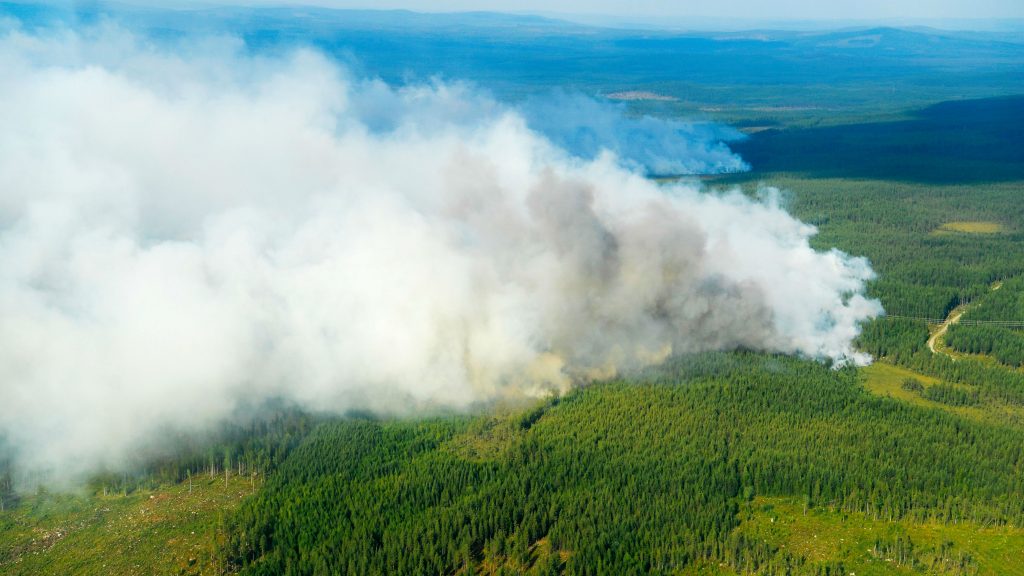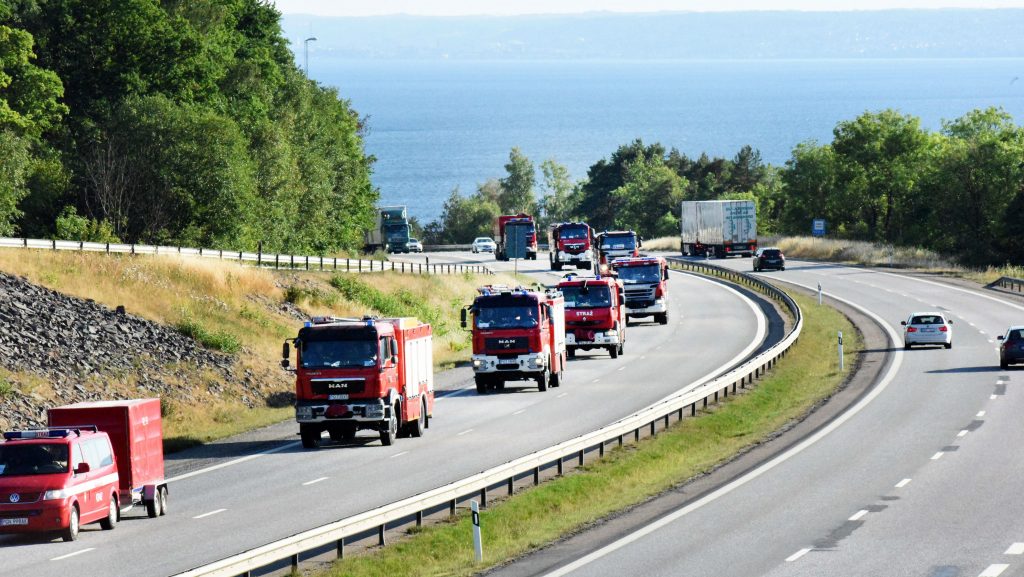Sweden’s worst-ever wildfires could last for months

The large wildfires currently burning will not be put out until the snow comes in October or November, says the head of the operation in Gävleborg (central Sweden).
Ljusdal fire alone beats 2014 record
Patrik Åhnberg was in charge of fighting the historic fire in Västmanland, but now just one of the many areas affected, in Ljusdal, now has a bigger fire than that record fire back in 2014.
And the dry warm weather seems set to continue through into August. It is the warmest year for east Sweden for at least 260 years, since records began in 1756. This week it is likely to reach 35 degrees in Mälardalen and south east Norrland (north-central Sweden).
The scorching week will make conditions even tougher for those fighting the worst fires in modern times, and the extreme weather means there is a great risk of more fires breaking out in the tinder dry grass and woodland.
Assistance from EU nations
As firefighters and volunteers from all over Sweden stream to work to fight the fires, Sweden’s membership in the European Union is also assisting. Four water-bombing planes have come from Italy and France, and on Sunday night it was confirmed that planes from Portugal are also on the way.

A convoy of 44 fire trucks and 139 fire fighters from Poland, that has been driving up through the country, met with cheers along the way, and reached Sveg in Jämtland (central Sweden) on Sunday night.
The Polish fire team will head towards the worst fires, in Ljusdal, where other EU help has also been concentrated.
Extreme fire risk
The Civil Contingencies Agency is coordinating all the efforts to deal with the crisis. Head of operations Britta Ramberg says the risk of fires will reach an extreme level during the week.
She says all their efforts are now focused on stopping the fires from spreading, and they are coordinating closely within the EU and with Sweden’s Nordic neighbours.
The total area now ablaze is 250 square kilometers, which is bigger than the cities of Stockholm and Uppsala put together.
There are fewer fires in total, as many have merged. The latest report from emergency operator SOS Alarm says there are 27 fires currently burning.
Some areas have been evacuated. You can always find all the latest warnings updated on Radio Sweden’s website.
Fires tamed in Jämtland, but raging elsewhere
For many of the small municipalities this is their worst-ever crisis.
The weather in Jämtland has been favourable for the firefighting efforts, with lower temperatures and more humidity. There are five fires there, and those in Ragunda, Bräcke, Berg and Härjedalen have now been isolated and stopped from spreading.
In Gävleborg just to the south are the worst fires, in Ljusdal municipality, where some villages have been evacuated, and the firefighters are mostly trying to create fire-breaks, in order to prevent the fires from spreading.
In Dalarna to the west the worst fire is in the Trängslet military firing range, which means there are fewer homes affected. But there is the constant risk of ammunition being detonated by the fire. And on Sunday night the fire there blossomed up unexpectedly and a group of firefighters were surrounded and had to be rescued by military helicopter, flying blind through the smoke.
During the week temperatures are expected to reach 35 degrees Celsius in some areas, and there is also the risk of thunderstorms, which could start more fires.
Related stories from around the North:
Canada: This year’s exceptional heat is becoming the new normal, scientists warn, CBC News
Finland: Firefighters battle forest fires in northern and southwest Finland, Yle News
Norway: European Arctic swelters under tropical temperatures, breaks heat records, The Independent Barents Observer
Russia: Record heatwave in the Arctic, The Independent Barents Observer
Sweden: Forest fires will become more frequent as climate warms, says scientist, Radio Sweden
United States: Warming, fires, warming, fires: How tundra wildfires could create an unstoppable cycle, Alaska Dispatch News



